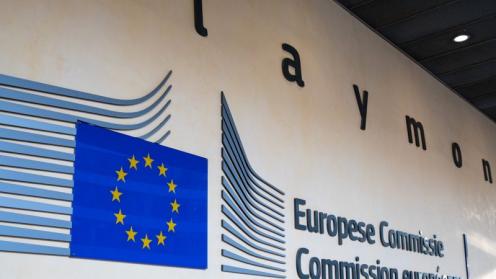European Commission must be firm when labelling hydrogen made from fossil fuels as low carbon
Last month GH2 warned against the calls for blue hydrogen to benefit from state aid in the EU since green hydrogen needs all the support it can get in order to scale. Diverting public money away from green hydrogen to blue hydrogen is a mistake; to divert public money to low credibility blue hydrogen would be a disaster. In this week’s Wrap we look at what the European Commission can do to ensure it adopts a robust definition of blue hydrogen.
At the end of April a new draft of the Low Carbon Fuels Delegated Act surfaced which defines what non-renewable hydrogen can be considered “low carbon”. This includes how to calculate the emissions from fossil gas-derived blue hydrogen.
The new version is an improvement on the September 2024 consultation draft where GH2 and several other organisations called for improved criteria so that only truly low carbon blue hydrogen with extremely limited methane and carbon dioxide emissions could qualify.
A key issue is measuring all the carbon dioxide, nitrous oxide and methane emissions associated with natural gas use. When the industry refers to carbon capture and storage rates, they are often evasive on the carbon capture and storage (CCS) rates that can be achieved. In addition, they often exclude the upstream emissions associated with natural gas extraction, and downstream emissions associated with CO2 leakage from permanent storage.
The Commission is moving in the right direction when it comes to the default emissions values which blue hydrogen producers will need to use where they do not use independently verified site specific-values.
The combined default lifecycle emissions of methane, carbon dioxide and nitrous oxide for natural gas are now set at 15.1 grammes of CO2 equivalent per megajoule (gCO2e/MJ) which is an increase of around 50% compared to the upstream value in the original draft. For methane this represents 6.6gCO2e/MJ which corresponds to a leakage rate of less than 2%. This would rise to around 2.5% if the European Commission retains the requirement to increase the value by 40% when the Methane Regulation reporting requirements kick in from August this year.
We encourage the European Commission to go even further by adopting a more conservative default value. This is all the more important given the pressure that Europe is under to import higher volumes of LNG from the United States where average upstream methane leakage is closer to 3% (and can be as high as 9.6%), and where the US Government is planning to roll back regulations that require companies to report their emissions.
Another area we flagged last year was the risk of offsetting, for example through credits on biomethane. On a related issue, the European Commission currently does not allow blending of natural gas and biomethane to artificially reduce the emissions intensity of low credibility blue hydrogen. The Commission should retain this restriction so that blue hydrogen projects are assessed on their own merits and to guard against a rush to deploy biomethane with all the environmental risks this would entail.
Last month GH2 warned against the calls for blue hydrogen to benefit from state aid in the EU since green hydrogen needs all the support it can get in order to scale. Diverting public money away from green hydrogen to blue hydrogen is a mistake; to divert public money to low credibility blue hydrogen would be a disaster.
There is a key meeting of EU member states set for 19 May which will review the latest draft prior to publication. GH2 urges member states to support the Commission’s adoption of a robust delegated act which allows only the highest credibility blue hydrogen to qualify as low carbon in the EU. Failure to do so would unnecessarily perpetuate the fossil fuel sector and stall uptake of the most sustainable and scalable form of hydrogen: green hydrogen made from renewable electricity and water.
Joe Williams,
Deputy CEO, GH2
